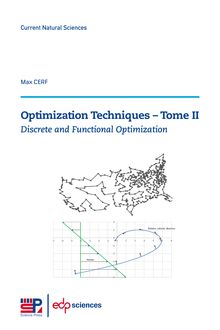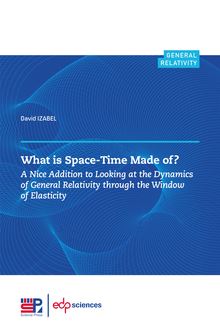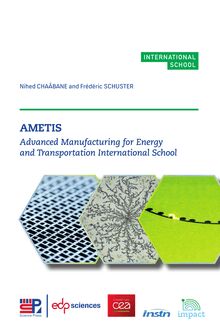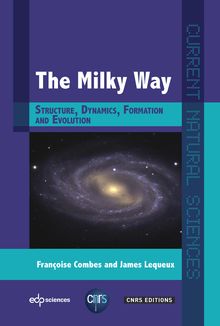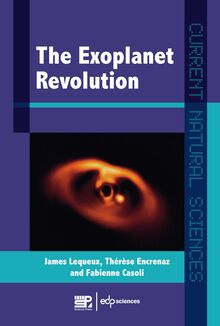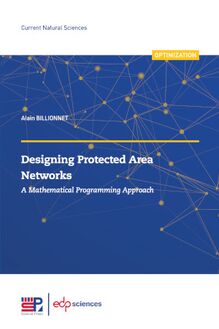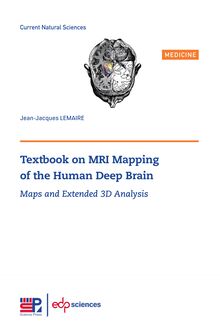-
 Univers
Univers
-
 Ebooks
Ebooks
-
 Livres audio
Livres audio
-
 Presse
Presse
-
 Podcasts
Podcasts
-
 BD
BD
-
 Documents
Documents
-
- Cours
- Révisions
- Ressources pédagogiques
- Sciences de l’éducation
- Manuels scolaires
- Langues
- Travaux de classe
- Annales de BEP
- Etudes supérieures
- Maternelle et primaire
- Fiches de lecture
- Orientation scolaire
- Méthodologie
- Corrigés de devoir
- Annales d’examens et concours
- Annales du bac
- Annales du brevet
- Rapports de stage
La lecture à portée de main
Découvre YouScribe en t'inscrivant gratuitement
Je m'inscrisDécouvre YouScribe en t'inscrivant gratuitement
Je m'inscrisEn savoir plus
En savoir plus

Description
Technology related to spinal endoscopy has undergone rapid development over the past 30 years. Some surgical techniques, such as the Unilateral Biportal Endoscopy (UBE), have been widely applied. Meanwhile, the surgical instruments of spinal endoscopy have also significantly evolved. However, there are still problems in dealing with complex spinal disorders and diseases, including limited surgical space, high rate of equipment damage and low surgical efficiency. In this context, Professor Shisheng He and his team at the Tenth People’s Hospital of Tongji University developed the V-shape Bichannel Endoscopy System (VBE). As a brand new uniportal bichannel endoscope unlike other existing endoscopes in clinical application, the VBE allows safe and efficient transforaminal lumbar decompression and interbody fusion to be performed under real-time and full-time endoscopic monitoring. The VBE integrates the working channel and endoscopic channel so that the two become one in a “V” shape. It requires only one incision. Both positions of the instruments and the endoscope are fixed, which makes it easy to identify the surgical site during operation. It is a completely different type of endoscope to the UBE and represents a new surgical concept. The VBE is also the first endoscopic system that can be performed in both air and water medium. As a result, the surgical procedure is more convenient and easier for surgeons to master. This book is edited by Professor Shisheng HE with contributions of more than 25 experts in minimally invasive spine surgery. It provides detailed information on the design principles, indications, surgical approaches, and surgical techniques of the VBE. The authors hope that this book will be useful to those who are committed to spinal endoscopic surgery.
Contributors.................................................III
Preface..................................................... V
Introduction .................................................VII
List of Abbreviations.......................................... XIII
CHAPTER 1
Brief History of Spinal Endoscopic Surgery.......................... 1
1.1 History and Development of UnichannelSpinal Endoscopy ......... 1
1.2 History of MED Technique................................. 7
1.3 History of Bichannel Spinal Endoscopy........................ 8
References.................................................. 12
CHAPTER 2
Principles of V-Shape Bichannel EndoscopySystem Design.............. 15
2.1 Keypoints of V-Shape Bichannel EndoscopySystem Design ........ 19
2.2 Composition of V-Shape Bichannel EndoscopySystem ............ 20
2.2.1 V-Shape Channels.................................. 20
2.2.2 Spinal Endoscope.................................. 22
2.2.3 The Use of Trephine................................ 22
2.2.4 The Lengthened Surgical Instruments................... 25
2.2.5 The Water Plugs................................... 26
2.2.6 The Choice of Interbody FusionCages................... 27
2.2.7 Bone Graft Materials and BiologicalFactors .............. 28
2.3 Foraminoplasty and Working CannulaPlacement ................ 28
2.4 Comparison of V-Shape Bichannel EndoscopySystem
and Conventional Unichannel Spinal EndoscopyTechniques ........ 29
2.5 Comparison of V-Shape Bichannel EndoscopicFusion and Unichannel Spinal Endoscopic Fusion....................................... 30
2.6 Comparison of V-Shape Bichannel EndoscopySystem and Unilateral Biportal EndoscopyTechniques.............................. 31
References.................................................. 32
CHAPTER 3
Clinical Applied Anatomy for V-Shape BichannelEndoscopy ............ 35
3.1 General Anatomy of the Lumbosacral Spine.................... 35
3.1.1 Bone Structures of the Lumbosacral Spine................ 35
3.1.2 Connections Between Vertebrae........................ 37
3.1.3 The Spinal Cord and Nerves of theLumbosacral Spine ...... 40
3.1.4 The Vascular Distribution in theLumbosacral Spine ........ 42
3.2 Anatomy Related to V-Shape BichannelEndoscopy Surgical Approaches............................................. 43
3.2.1 Anatomy of the Lumbar IntervertebralForamen ........... 44
3.2.2 Anatomy of the Lumbar Facet Joint.................... 47
3.2.3 The Safety Triangle................................. 48
References.................................................. 49
CHAPTER 4
V-Shape Bichannel Endoscopy Assisted Discectomyand Decompression .... 51
4.1 Application of Type I V-Shape BichannelEndoscopy Decompression Cannula in Lumbar Surgery................................ 52
4.1.1 Structure of Type I VBE DecompressionCannula .......... 52
4.1.2 Indications....................................... 53
4.1.3 Instruments....................................... 53
4.1.4 Position.......................................... 53
4.1.5 Planning......................................... 53
4.1.6 Anesthesia........................................ 54
4.1.7 Establishment of Working Channel forUnichannel Endoscope System.................................. 54
4.1.8 Establishment of Working Channel for TypeI VBE Decompression Cannula.............................. 55
4.1.9 Foraminoplasty with Type I VBEDecompression Cannula ... 56
4.1.10 Discectomy and Decompression........................ 57
4.2 Application of Type II V-Shape BichannelEndoscopy Decompression Cannula in Lumbar Surgery................................ 57
4.2.1 Structure of Type II VBE DecompressionCannula ......... 57
4.2.2 Indications....................................... 58
4.2.3 Instruments .......................................58
4.2.4 Position.......................................... 58
4.2.5 Planning......................................... 58
4.2.6 Anesthesia........................................ 59
4.2.7 The Establishment of the Working Cannula............... 59
4.2.8 Discectomy and Decompression........................ 59
References.................................................. 60
CHAPTER 5
V-Shape Bichannel Endoscopic Lumbar Fusion....................... 61
5.1 Anatomy ..............................................63
5.2 Surgical Instruments andEquipment.......................... 64
5.3 Layout of Operating Room................................. 64
5.4 SurgicalIndications....................................... 65
5.5 Surgical Contraindications................................. 65
5.6 Surgical Methods........................................ 66
5.6.1 Preoperative Preparation and Planning.................. 66
5.6.2 Body Position and Surface Location.................... 67
5.6.3 Operation Process.................................. 68
5.7 Precautions for Operation.................................. 79
5.7.1 Preoperative Imaging Data Analysis andSurgical Planning ... 79
5.7.2 Direction of Puncture............................... 79
5.7.3 Location of Working Cannula......................... 79
5.7.4 How to Use a Trephine to Remove Bones?................ 79
5.7.5 Hemostasis....................................... 80
5.7.6 To Ensure the Fusion of Bone Graft.................... 80
5.7.7 Use of Water Plug.................................. 80
5.7.8 Precautions of Decompression......................... 80
5.7.9 Management of Working Cannula Shift.................. 80
5.7.10 Avoidance of Vascular Injury......................... 81
5.8 PostoperativeTreatment................................... 81
5.9 Prevention of Complications................................ 81
5.9.1 Stimulation and Injury of the OutletRoot................ 81
5.9.2 Injury of Exiting Root and Dural Sac................... 81
5.9.3 Injury of Vessels and Organs in Front ofVertebral .......... 82
5.9.4 Malposition of Interbody Fusion Cage................... 82
5.9.5 Nonunion of Bone Graft .............................83
References.................................................. 83
CHAPTER 6
Clinical Application of V-Shape BichannelEndoscopy ................. 85
6.1 Application of V-Shape Bichannel Endoscopyin Lumbar Decompression ..........................................85
6.2 Application of V-Shape Bichannel Endoscopyin Lumbar Fusion ..... 91
6.2.1 VBE Lumbar Fusion for Lumbar SpinalStenosis ........... 91
6.2.2 VBE Lumbar Fusion for Spondylolisthesis................ 109
6.3 VBE Lumbar Fusion for Lumbar Instability.................... 119
6.4 VBE Lumbar Fusion for Recurrent Lumbar DiscHerniation ........ 122
CHAPTER 7
Lumbar Surgery Rehabilitation................................... 131
7.1 Introduction............................................ 131
7.2 Low Back Pain Clinical Practice Guideline..................... 132
7.3 PreoperativeRehabilitation................................. 134
7.4 Patient Education........................................ 138
7.5 Surgical Complications.................................... 138
7.6 Postoperative Evaluation.................................. 140
7.7 Postoperative Rehabilitation Principles........................ 141
7.8 Postoperative Rehabilitation Protocols........................ 143
References.................................................. 158
Sujets
Informations
| Publié par | EDP Sciences |
| Date de parution | 02 février 2023 |
| Nombre de lectures | 0 |
| EAN13 | 9782759829088 |
| Langue | English |
| Poids de l'ouvrage | 20 Mo |
Informations légales : prix de location à la page 1,1600€. Cette information est donnée uniquement à titre indicatif conformément à la législation en vigueur.
Extrait
-
 Univers
Univers
-
 Ebooks
Ebooks
-
 Livres audio
Livres audio
-
 Presse
Presse
-
 Podcasts
Podcasts
-
 BD
BD
-
 Documents
Documents
-
Jeunesse
-
Littérature
-
Ressources professionnelles
-
Santé et bien-être
-
Savoirs
-
Education
-
Loisirs et hobbies
-
Art, musique et cinéma
-
Actualité et débat de société
-
Jeunesse
-
Littérature
-
Ressources professionnelles
-
Santé et bien-être
-
Savoirs
-
Education
-
Loisirs et hobbies
-
Art, musique et cinéma
-
Actualité et débat de société
-
Actualités
-
Lifestyle
-
Presse jeunesse
-
Presse professionnelle
-
Pratique
-
Presse sportive
-
Presse internationale
-
Culture & Médias
-
Action et Aventures
-
Science-fiction et Fantasy
-
Société
-
Jeunesse
-
Littérature
-
Ressources professionnelles
-
Santé et bien-être
-
Savoirs
-
Education
-
Loisirs et hobbies
-
Art, musique et cinéma
-
Actualité et débat de société
- Cours
- Révisions
- Ressources pédagogiques
- Sciences de l’éducation
- Manuels scolaires
- Langues
- Travaux de classe
- Annales de BEP
- Etudes supérieures
- Maternelle et primaire
- Fiches de lecture
- Orientation scolaire
- Méthodologie
- Corrigés de devoir
- Annales d’examens et concours
- Annales du bac
- Annales du brevet
- Rapports de stage
